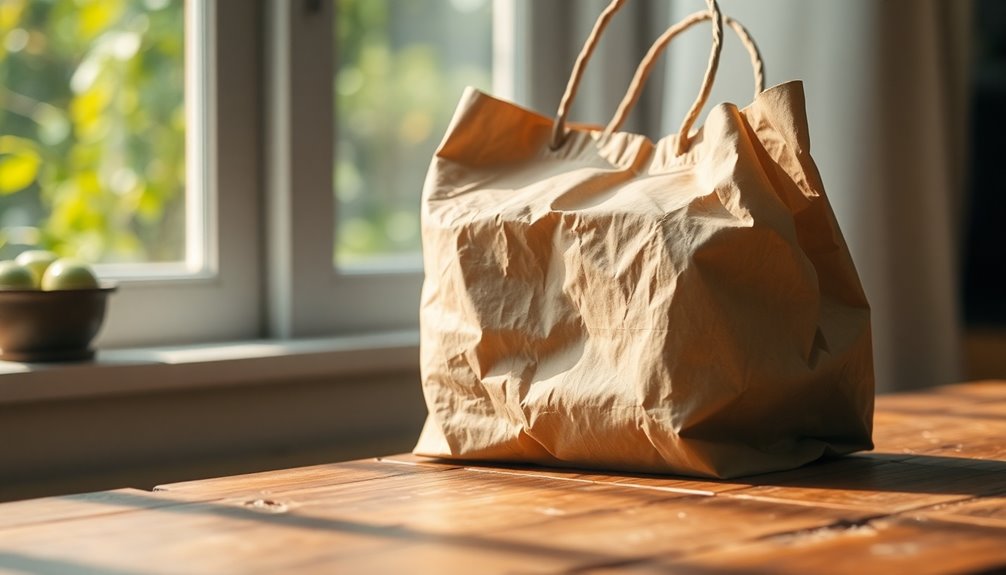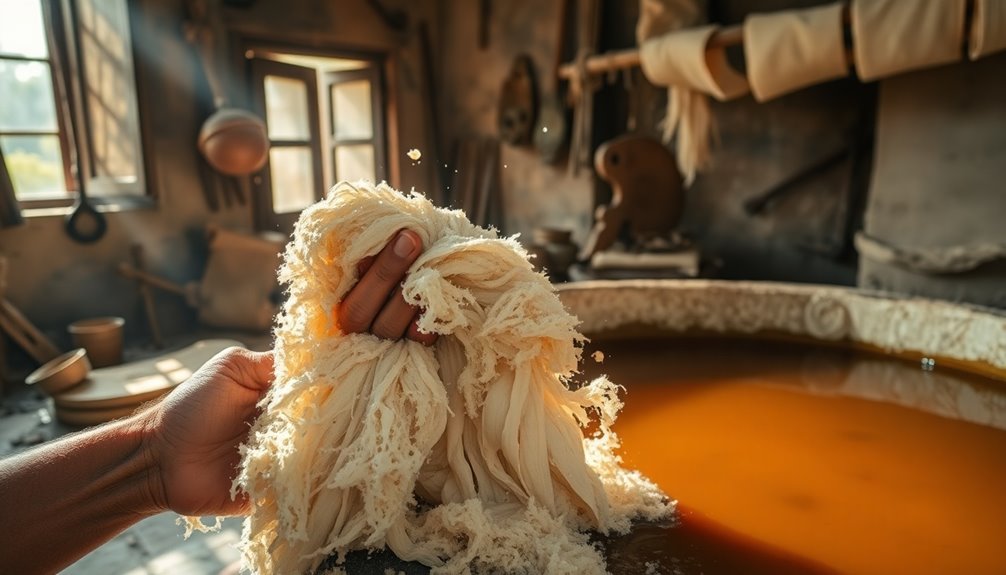Paper's made from a surprising mix of materials, not just wood. It originally came from natural fibers like bamboo, hemp, and cotton. Nowadays, about 10% of paper's produced using non-wood sources, such as agricultural waste like straw and sugarcane bagasse. Plus, recycled paper is now popular, cutting down on resources and energy use. While traditional paper contributes to deforestation, innovations in sustainable sourcing are changing the game. You might be amazed at how this everyday material evolves. If you're curious about the impact and future of paper, there's plenty more to uncover.
Key Takeaways
- Traditional paper is primarily made from wood fibers, with wood pulp becoming the dominant source since the 19th century.
- Early paper-making utilized natural fibers like bamboo, hemp, linen, and cotton, showcasing a diverse range of materials.
- Non-wood sources, including agricultural waste and recycled paper, now contribute about 10% of global paper production.
- Specialty papers, like rice paper, are crafted for specific applications, highlighting the versatility of paper materials.
- Innovations in biodegradable and compostable paper products are emerging, reflecting a shift towards sustainable sourcing and production methods.
Surprising Paper Sources Revealed
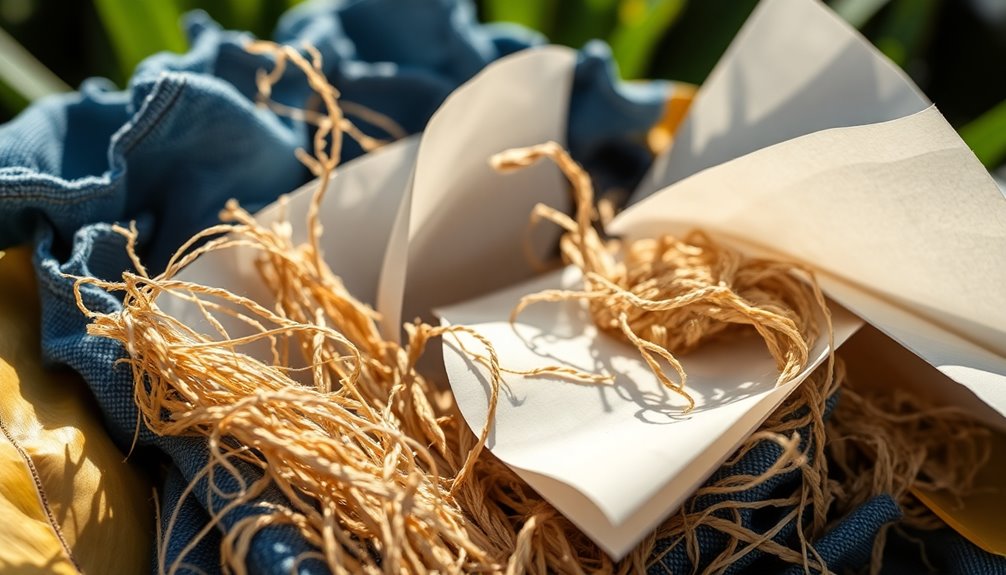
When you think about paper, wood is probably the first thing that comes to mind, but there are surprising sources that contribute to this everyday material. While traditional paper primarily uses wood fibers, the introduction of wood pulp in the 19th century solidified wood's dominance. However, before this shift, fibers like hemp, linen, and cotton played significant roles in paper production.
Today, new materials are making waves in the industry. For instance, stone paper, crafted from crushed stone, stands out due to its eco-friendly production—requiring no water or harmful chemicals. This innovation significantly lessens environmental impacts.
Currency paper, on the other hand, is usually made from cotton fibers, prized for durability. But polymer notes, which made their debut in Australia in 1988, provide a sustainable and longer-lasting alternative that's gaining popularity.
Additionally, specialty papers like rice paper, derived from plant-based materials, cater to specific applications, including cosmetics and artistic projects. With these surprising sources, it's clear that paper's composition is more varied than you might have thought, opening up exciting avenues for sustainable alternatives.
Paper's Unexpected Raw Materials
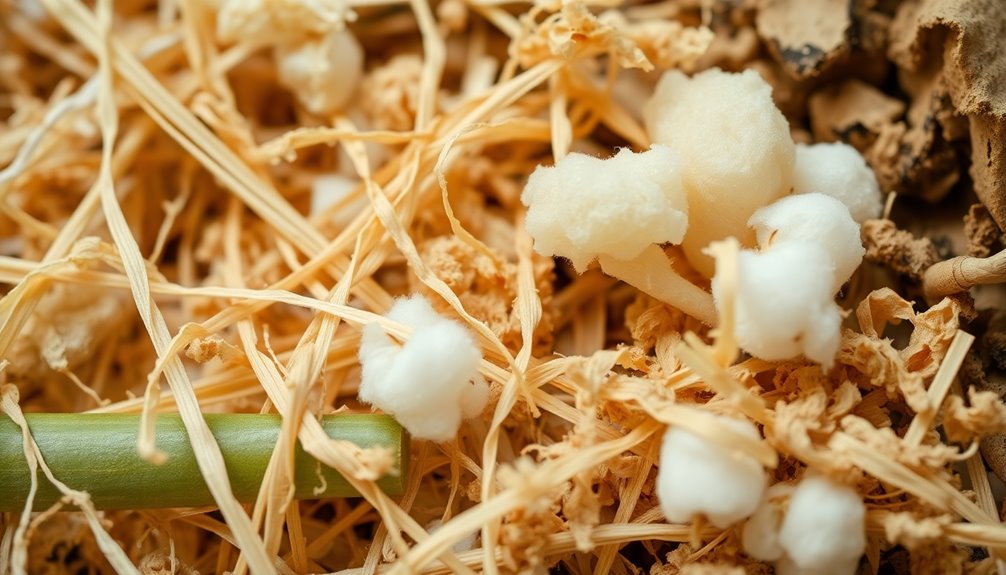
Have you ever considered what else goes into making paper besides wood? You might be surprised to learn that traditional paper originated from natural fibers like bamboo, hemp, linen, and cotton. These materials were crucial in the early paper-making process developed by Cai Lun in 105 AD. It wasn't until the 19th century that wood became the primary raw material, thanks to innovators like Friedrich Gottlob Keller and Charles Fenerty, who introduced wood fiber in 1844, dramatically boosting efficiency.
Today, the world of paper manufacturing has expanded to include some unexpected raw materials. For instance, you can find specialty papers crafted from stone, which emphasizes sustainability by requiring no water or harmful chemicals. Currency paper often combines cotton and linen, ensuring durability and a light weight for easy handling, while polymer banknotes, introduced in Australia in 1988, offer enhanced resilience.
Even more intriguing is flash paper, made from nitrocellulose, showcasing the diverse range of materials used in modern paper production. So, the next time you pick up a sheet, remember that it could come from sources far beyond the trees in your backyard!
Recycled Paper for Crafts

While you may not realize it, recycled paper offers a fantastic opportunity for your creative projects. Made from post-consumer waste like newspapers and cardboard, using recycled paper helps reduce landfill waste and conserves natural resources. The recycling process removes inks and contaminants, transforming these materials into new sheets, saving an impressive 17 trees for every ton produced.
When you craft with recycled paper, you not only nurture your creativity but also contribute to a more sustainable world. Whether you're scrapbooking, making cards, or trying your hand at origami, recycled paper can serve as a versatile medium. Plus, it significantly lowers your carbon footprint—producing recycled paper uses 60% less energy compared to creating new paper.
Many craft enthusiasts choose recycled paper to promote sustainability, as it emits fewer greenhouse gases during production and supports a circular economy. So, the next time you dive into a craft project, consider reaching for recycled paper. You'll be making a positive impact on the environment while expressing your creativity in unique and innovative ways. Embrace the art of recycling, and turn waste into beautiful crafts!
Environmental Impact of Sourcing

The environmental impact of sourcing paper is staggering, with approximately 24,000 gallons of water required to produce just one ton. That's not all; nearly 30,000 trees are cut down daily to meet global toilet paper demand, putting immense strain on our forests. This deforestation contributes to habitat loss and climate change, making it crucial to rethink our paper consumption.
Recycling offers a glimmer of hope. By recycling one ton of paper, you can save up to 20 trees, significantly reducing deforestation and its associated environmental impact. Plus, recycling paper releases 73% less air pollution compared to manufacturing new paper from raw materials, making it a more eco-friendly choice.
Sourcing paper from sustainable materials like hemp or recycled fibers is another effective way to mitigate damage. These alternatives drastically reduce the carbon footprint, promoting a healthier planet. By choosing sustainably sourced paper, you're not just making an informed choice; you're actively contributing to the preservation of our environment. Additionally, the shift towards sustainable energy solutions can further enhance the impact of paper production by reducing reliance on fossil fuels. It's time to consider how your paper choices affect the world around you and opt for solutions that promote sustainability.
Innovative Paper From Agricultural Waste

Innovative paper made from agricultural waste is changing the way we think about sustainability in the paper industry. By utilizing byproducts like straw, sugarcane bagasse, and wheat husks, this approach not only reduces waste but also promotes a more sustainable future. You'll appreciate that this type of paper production decreases reliance on traditional wood pulp sources, which helps conserve millions of trees and preserves vital forest ecosystems.
Moreover, agricultural waste paper boasts a lower environmental footprint, often requiring significantly less water and energy compared to conventional paper manufacturing processes. Some companies even report that using agricultural waste can reduce CO2 emissions dramatically, aiding global climate change mitigation efforts.
This innovative method reflects a growing trend toward circular economy practices, integrating waste materials into new products and minimizing resource extraction. As you consider your choices, remember that every sheet of agricultural waste paper contributes to a more sustainable world, making it a smart option for eco-conscious consumers. By choosing this type of paper, you're not just making a purchase; you're supporting a greener future and encouraging the responsible use of our planet's resources.
Innovative Agricultural Waste Sources
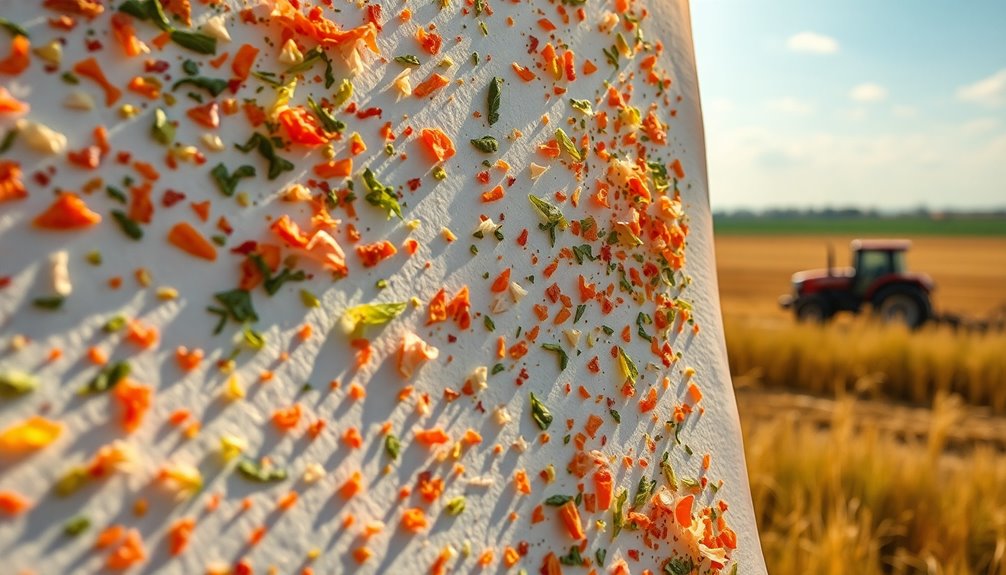
Agricultural waste sources are at the forefront of a sustainable paper revolution. You might be surprised to learn that materials like straw, sugarcane bagasse, and hemp are being transformed into paper, significantly reducing our reliance on traditional wood fibers. By utilizing agricultural waste for paper production, you can help divert about 30% of crop residues from landfills, which minimizes environmental impact.
Not only does paper made from agricultural waste require less energy and water to produce, but it also contributes to more sustainable manufacturing practices. This shift not only promotes eco-friendliness but also supports rural economies by creating new markets for crop by-products. Imagine the impact of using leftover materials from farming, turning what was once considered waste into valuable products.
Moreover, research shows that incorporating agricultural waste into paper manufacturing can dramatically lower carbon emissions compared to conventional methods. As you consider your choices, think about how supporting paper made from agricultural waste benefits both the planet and local communities. Embracing these innovative sources is a step toward a greener future, and you can be part of that change.
Frequently Asked Questions
What Was Paper Originally Made Of?
Paper was originally made from plant fibers. You'd find that the first paper-making process, developed by Cai Lun in 105 AD, used bamboo fibers combined with water and sunlight. As time went on, other materials like hemp, linen, and cotton became common for paper production, lasting for about six centuries. It wasn't until the mid-19th century that wood fibers entered the scene, changing the landscape of paper manufacturing forever.
What Was Paper Made Out of Before Trees?
Before trees became the go-to source, paper was made from various plant materials. You'd find early sheets crafted from bamboo, hemp, and linen. Imagine ancient cultures using papyrus from the Cyperus papyrus plant in Egypt or animal skins for parchment. These organic materials were processed into writing surfaces that were lightweight and durable. As demand for paper grew, the shift to wood fibers eventually transformed the paper-making industry we know today.
What Is the Difference Between Paper and Papyrus?
The difference between paper and papyrus lies mainly in their composition and production methods. You'd notice that papyrus is made from the pith of the Cyperus papyrus plant, while paper comes from various fibrous materials like bamboo or wood pulp. Papyrus has a rigid texture, whereas paper can be crafted in multiple weights and textures. This versatility in paper's production allows for broader uses compared to the more localized application of papyrus in ancient cultures.
What Is the Original Paper?
The original paper, invented by Cai Lun in 105 AD, was crafted from bamboo fibers mixed with water and sunlight. You'd find it lightweight and perfect for writing. Early methods relied on natural materials like hemp and cotton before wood pulp took over in the 19th century. As demand surged, revolutionary water-powered mills emerged in the late 13th century, enhancing efficiency and transforming how paper was produced across cultures.





